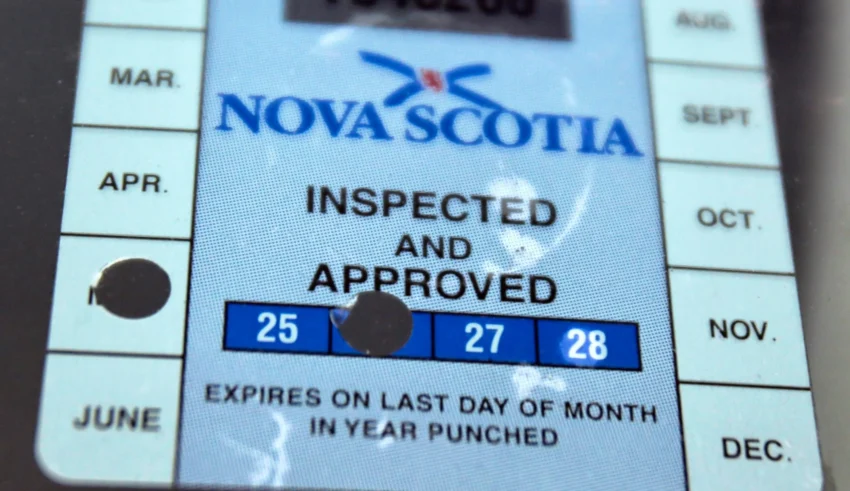
In Nova Scotia, “Inspection Day” isn’t just a formality. It’s a legal checkpoint, a buyer safeguard, and a critical step in vehicle ownership, especially if you’re purchasing a pre-owned vehicle. Whether you’re shopping from a private seller, browsing used car dealers in Nova Scotia, or considering an online purchase, a valid Motor Vehicle Inspection (MVI) can make or break your decision.
This guide walks you through what Inspection Day entails, what mechanics check for, how it impacts your purchase or registration, and why it’s one of the most important steps in the vehicle ownership process.
What Is Inspection Day?
Inspection Day refers to the date a vehicle undergoes Nova Scotia’s mandatory Motor Vehicle Inspection. For most passenger vehicles, the province requires a safety inspection every two years, and a valid inspection sticker must be displayed on the windshield. If you’re buying or registering a used vehicle, proof of inspection is usually non-negotiable.
What Happens During a Vehicle Inspection?
A licensed technician at an approved inspection station will evaluate the roadworthiness of your vehicle. Here’s what they check:
1. Brakes
Pads, rotors, calipers, brake lines, and master cylinders are inspected for wear, leaks, and responsiveness.
2. Steering and Suspension
The mechanic will assess components like ball joints, tie rods, shocks, and struts for damage or excessive play.
3. Tires
Tread depth must meet minimum provincial standards, and tires should be free of bulges, exposed cords, or uneven wear.
4. Exhaust System
Any leaks, rust damage, or excessive noise from the exhaust can cause a fail. Catalytic converters and mufflers must be intact.
5. Lighting and Electrical
Headlights, taillights, signal lights, hazard lights, and the horn must all be functional.
6. Windshield and Wipers
Cracks in the windshield that obstruct the driver’s vision are disqualifying. Wiper blades must work and clean effectively.
7. Frame and Body
Structural integrity matters. The technician will check for corrosion or damage to the frame that affects safety.
8. Seatbelts and Airbags
Functionality and condition of seatbelts are mandatory. Airbag warning lights are also checked.
Why Inspection Day Matters, Legally and Financially
A valid inspection can be the difference between a smooth transaction and a costly mistake. Here’s why:
1. Legal Compliance
Nova Scotia law requires vehicles to have a valid inspection sticker to be operated on public roads. Driving with an expired or failed inspection can lead to fines or license suspension.
2. Buyer Protection
If you’re purchasing a used vehicle, especially from private sellers, a valid inspection provides a minimum guarantee of road safety. For additional protection, many buyers turn to trusted used car dealers in Nova Scotia who offer certified pre-owned options that already meet inspection standards.
3. Insurance and Registration
You won’t be able to register your newly purchased vehicle without a valid inspection. And insurers may require proof before activating coverage.
4. Negotiation Leverage
A recent inspection can raise a vehicle’s value. Conversely, a failed inspection can give you grounds to walk away or negotiate the price down to cover anticipated repairs.
Common Pitfalls to Avoid
- Skipping the inspection when buying privately. Some sellers may offer you a “great deal” without a valid inspection. Walk away unless you’re prepared for costly surprises.
- Assuming an inspection is recent. Always check the date on the inspection sticker or request documentation. A vehicle inspected 20 months ago may be close to expiry.
- Not using reputable shops. For peace of mind, stick to trusted inspection centers or dealerships like Carlantic, known for transparency and adherence to provincial standards.
What to Do If the Vehicle Fails Inspection
If your vehicle fails, the technician will give you a detailed list of reasons, often referred to as a rejection slip. You can choose to:
- Have the issues fixed at the same location.
- Take the vehicle to another mechanic for repairs.
- Re-inspect the vehicle within 10 days to avoid paying for a full re-inspection.
Tips for Buyers and Sellers
For Buyers:
- Always request proof of inspection, even when buying from friends or family.
- Use Inspection Day as a contingency in your purchase agreement.
- Consider third-party pre-purchase inspections for extra protection.
For Sellers:
- An up-to-date inspection can make your listing more attractive.
- Address minor issues beforehand to avoid haggling over small problems.
- Be transparent about the inspection status to maintain credibility.
FAQs
Is a vehicle inspection the same as a vehicle registration?
No. A vehicle inspection certifies roadworthiness, while registration makes your vehicle legal to operate under your name. You need a valid inspection to register.
How much does an MVI cost in Nova Scotia?
Prices vary, but typical costs range from $25 to $40 plus tax. Additional charges apply if repairs are needed.
Can I drive a car without an inspection to a mechanic?
Yes, but only directly to the inspection station or repair shop and usually with proof of an appointment. Still, it’s best to check with local law enforcement.
What if I’m buying from out of province?
If you’re importing a vehicle into Nova Scotia, it must pass a provincial inspection, even if it was recently inspected elsewhere.
Is there a grace period for expired inspections?
No. Once your inspection expires, you’re legally not allowed to operate the vehicle until it’s re-inspected and passed.
Final Thoughts
Inspection Day may seem like a formality, but in Nova Scotia, it plays a central role in public safety, legal compliance, and buyer protection. Whether you’re selling your car or browsing inventory at Carlantic, take the inspection process seriously. It’s not just about checking a box, it’s about making sure what you’re driving, or selling, is safe and reliable.








